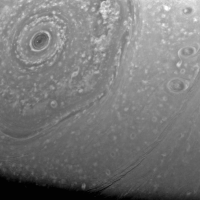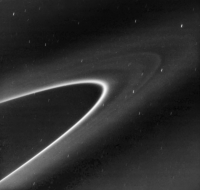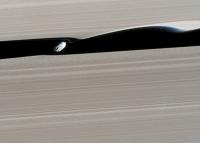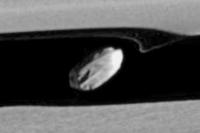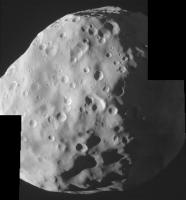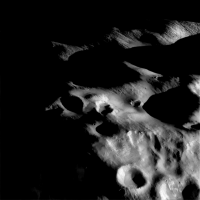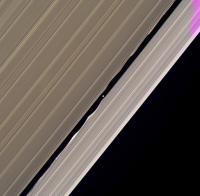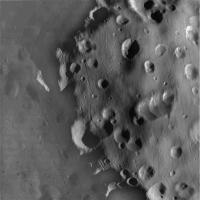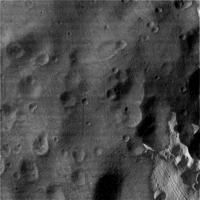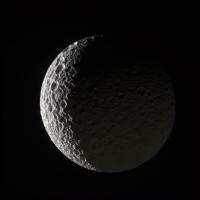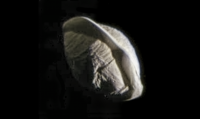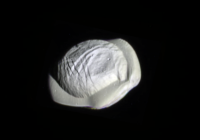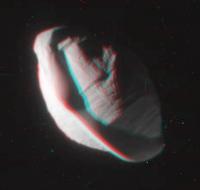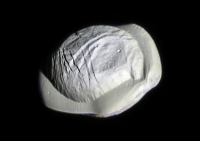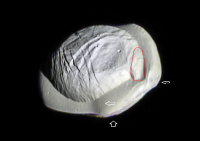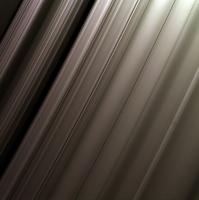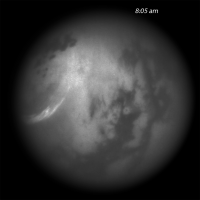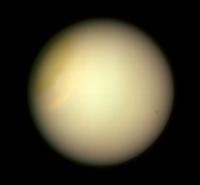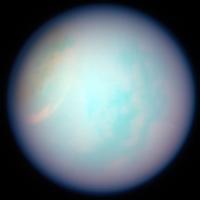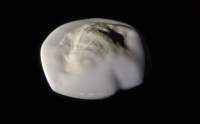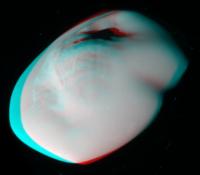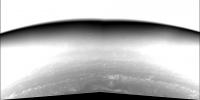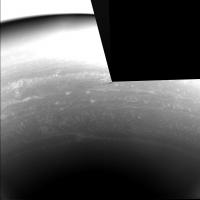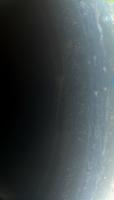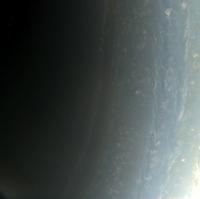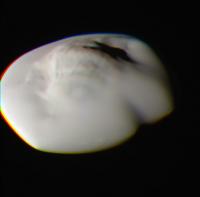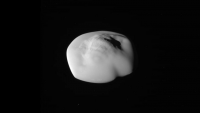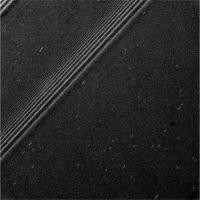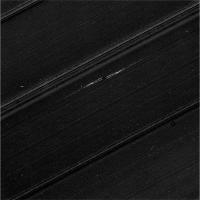Printable Version of Topic
Click here to view this topic in its original format
Unmanned Spaceflight.com _ Cassini's ongoing mission and raw images _ Grand Finale part 1
Posted by: ngunn Nov 29 2016, 11:03 PM
With its second to last swing by Titan ![]() the curtain has now opened on Cassini's final act. What wonders will we see in the rings?
the curtain has now opened on Cassini's final act. What wonders will we see in the rings?
Posted by: Floyd Nov 30 2016, 12:37 AM
Rev 251-253, Nov 30 - Dec 22, News Room Looking Ahead http://www.ciclops.org/view/8451/Rev251-253?js=1
Should be exciting and starts tomorrow, November 30.
Posted by: craigmcg Nov 30 2016, 12:24 PM
Any resources out there folks can suggest for monitoring in near-real time?
Posted by: Therion Nov 30 2016, 04:34 PM
Yea! Right here : ))
Posted by: B Bernatchez Nov 30 2016, 05:47 PM
Eyes on the Solar System has a Cassini module, if that is what you were looking for.
Posted by: craigmcg Dec 5 2016, 10:07 PM
First ring-crossing complete.
https://spacefellowship.com/news/art49608/cassini-makes-first-ring-grazing-plunge.html
Posted by: Ian R Dec 5 2016, 10:54 PM
Cassini got a good look at Enceladus just a couple of days before embarking on the ring-dive orbits:
https://flic.kr/p/NCukd3https://flic.kr/p/NCukd3
https://flic.kr/p/PAEBgYhttps://flic.kr/p/PAEBgY
Posted by: Ian R Dec 6 2016, 01:38 PM
Now it looks like we can see clouds on the border of Saturn's north polar region (NPR) casting shadows!
Posted by: Hungry4info Dec 10 2016, 06:11 PM
Quick question: When Cassini's periapsis is between the planet and rings, would we be able to get a measurement of the planet's core mass (like Juno is doing at Jupiter)?
Posted by: Paolo Dec 10 2016, 07:36 PM
IIRC this is one of the scientific objectives of this mission phase
Posted by: Decepticon Dec 10 2016, 11:48 PM
Could Cassini see dust particulate falling above the ring plane into the upper atmosphere?
I imagine Saturn having a nightly show of shooting stars on the night side.
Posted by: jasedm Dec 10 2016, 11:51 PM
Yes, this is one of the main grand finale objectives, but not achievable until Cassini makes the last major orbit amendment in April next year and begins those revolutions which take it between the inner edge of the D-ring and the planet itself. This provides the opportunity to separate out the mass of the planet and the rings themselves,
Posted by: JohnVV Dec 11 2016, 01:55 AM
i am updating the Cassini Celesta SPICE files on celestailmatters
date time span from jan 2015 to april 2017
this is using the spice orbits !!!!! in celestia and NOT!!! the default
http://forum.celestialmatters.org/viewforum.php?f=18
as of right now cassini is here
http://imgbox.com/3j6L6mnY http://imgbox.com/KMg9Ctrl
Posted by: JRehling Jan 6 2017, 08:56 PM
One key difference between Saturn and Jupiter is that Saturn has a much greater scale height, stretching out the vertical structure of the atmosphere. That's a huge advantage for visual recognition of relief in Saturn's clouds.
Posted by: Jaro_in_Montreal Jan 11 2017, 09:19 PM
Nice "propeller" caught by Cassini:
https://saturn.jpl.nasa.gov/raw_images/403447/
Posted by: jasedm Jan 12 2017, 06:26 AM
That is a nice one. Looks like it's in the process of 'clearing it's neighbourhood' too.... ![]()
Posted by: nprev Jan 18 2017, 05:56 AM
![]()
That is arguably one of the most stunning images in the history of space exploration. Incredible, Ian.
Posted by: antipode Jan 18 2017, 05:58 AM
Holy Crud! Awesome!
P
Posted by: jasedm Jan 18 2017, 07:15 AM
Great to see the little blighter up close.
It appears that the orbital dynamics are still very tricky to pin down definitively - it falls outside the FOV in most of the images. No complaints though!
Posted by: Explorer1 Jan 18 2017, 08:06 AM
So much to unpack in that image. Bizarre shape (are those ridges?) and those 'streamers'? And what is that shadow on the sunlit side? Surely not something popping up from the surface, right? Or is it even a shadow, or some sort of dark material on the surface?
Such a 'grainy' texture to the rings as well, are we on the verge of resolving the largest of the individual particles (maybe those specks on the edges of the gap?). What sort of resolution is it?
I know we won't get views like this for a long time after September, but I can't even fathom where one would get started on designing a dedicated ring mission...
Posted by: Phil Stooke Jan 18 2017, 01:52 PM
Amazing image! I have made an enlarged version with a clearer view of the ridges on the surface. I think they are real ridges. The shadow looks like a deep hollow.
Phil
Posted by: Therion Jan 18 2017, 07:41 PM
Oh and look at this one! Wall of ice pillars emerging above ring plane.. 
Posted by: jasedm Jan 18 2017, 07:41 PM
Unfortunately I think that Cassini is a long way away from resolving the ring particles here, and won't be capable during the mission of achieving that.
For context the Keeler gap is ~40km wide, and Daphnis is 8km along its longest axis. I think the grainy texture is clumping of smaller ring particles.
Posted by: JRehling Jan 18 2017, 07:54 PM
This feels like we're going back to Kepler and Newton working out planetary dynamics. Do gravity plus Newtonian physics alone explain all of this wackiness? Amazing. The math here may turn out to be more like the dynamics of galaxies rather than anything else we've seen in the solar system.
Posted by: alan Jan 18 2017, 08:10 PM
I thought that looked familiar
http://www.fantastic-plastic.com/NXClassPodSide.jpg
Posted by: Bjorn Jonsson Jan 18 2017, 11:18 PM
I have looked at almost every PDS-released image obtained by Cassini (the vast majority I looked at for less than a second though). This is one of the most spectacular Cassini images I have seen (and there are thousands of highly spectacular Cassini images out there).
Posted by: jasedm Jan 19 2017, 06:53 PM
Interesting that Daphnis shows little or no evidence of an equatorial 'girdle' like Atlas and Pan. I believe it's rotation is synchronous (as are theirs) so there must be another reason that it doesn't accumulate ring constituent particles in the same way as those moons?
Endlessly fascinating this mission.
Posted by: JRehling Jan 20 2017, 03:03 AM
At 250 km above the martian surface, MRO has a resolution of about 35 cm, so in terms of sheer resolving power, what you suggest is very modest. However, the quality of the science depends on the nature of the target. Perhaps the ring particles in such a view of, say, the B ring, would be against a backdrop of other, similar ring particles, making the image blandly or chaotically uninterpretable. The edges of the rings seems to be a better place for observations; even in the B ring, maybe stereo imaging would provide clarity. Knowing what we would see would depend upon knowing the nature of the ring particles, which is the very thing we'd be looking to find out. It seems, though, that high-detail visual imaging of the ring particles is possible, at least in certain geometries.
Posted by: nprev Jan 27 2017, 03:12 AM
ADMIN NOTE: Moved 8 posts regarding possible future ring missions to a http://www.unmannedspaceflight.com/index.php?showtopic=8280 for that topic.
Posted by: Phil Stooke Feb 1 2017, 04:51 PM
Wow, check out Epimetheus here. This just in!
http://saturnraw.jpl.nasa.gov/multimedia/images/raw/casJPGFullS97/N00275739.jpg
People pondering the origin of the grooves of Phobos will need to think about this.
Phil
Posted by: Explorer1 Feb 1 2017, 07:17 PM
The same grooves on an object about 5 x the radius of Phobos, and made of ice rather than rock... how bizarre.
New Mimas Saturnshine images are down as well!
Posted by: machi Feb 1 2017, 08:12 PM
It looks that Epimetheus is another body in the Solar System with dune-like features on its surface (look at central lower part of this image).
Posted by: jasedm Feb 1 2017, 08:41 PM
Good point Phil - the two look visually analogous. I wonder if it's anything to do with these small bodies being at or near the Roche limit?
The Mimas images are beautiful too - this phase angle really shows up the fact that Mimas is largely water ice rather than 'rock'
Posted by: JRehling Feb 1 2017, 09:47 PM
Epimetheus really looks like two parts Phobos (the grooves and shape), one part Eros (the bicolored slopes).
It feels like we're getting close to something like a phase-state diagram of small bodies. Something like escape velocity on one axis and whatever else explains the varied nature of these places on the other axis/axes. It's remarkable how varied they are, but we're seeing repetitions of each phenomenon; the causes should start to become clearer.
Posted by: nprev Feb 2 2017, 05:30 AM
Amazing views.
Looks like there may be a few collapse pits in addition to craters. Reminds me a bit of a cometary surface, actually.
Posted by: Therion Feb 2 2017, 10:38 PM
Some flyby gifs:


Posted by: Phil Stooke Feb 28 2017, 01:24 AM
Some very nice images of Epimetheus recently. Here are two showing lots of grooves. I have brightened the area illuminated by Saturn to hint at what the raw data will show us when it arrives in PDS. one image is almost entirely lit by Saturn rather than the Sun.
Phil
Posted by: wildespace Mar 4 2017, 04:18 PM
Some great Mimas closeups in the newest raw images! Looking forward to colour composites from you excellent lot.
Here's a quick RGB composite from yours truly, with some cleaning up of the artifact, although it's still not perfect:
That's no space station, it's one heavily cratered moon!
Posted by: Ian R Mar 9 2017, 11:36 AM
Incredible new views of Pan, and its razor-thin equatorial bulge!
North is to the upper-right.
Staring face-on at the north pole.
Edit: Thanks to Dr. Phil for pointing out my north/south confusion.
Posted by: Ian R Mar 9 2017, 11:38 AM
Medium range view, showing the full extent of the Encke Division.
Posted by: Ian R Mar 9 2017, 12:55 PM
Another medium range view, bore-sighted on the moon's north pole:
Edit: Thanks to Dr. Phil for pointing out my north/south confusion.
Posted by: nprev Mar 9 2017, 01:10 PM
Astonishing. Looks like a cutaway view of a nut covered in chocolate. Accreted ring material around the equator, I presume.
Posted by: Phil Stooke Mar 9 2017, 02:08 PM
Fantastic images... and one little correction. As you say, Ian, north is to the upper right in the first view you posted, so the partially illuminated bulge at lower left is the southern hemisphere. The other views show the northern hemisphere, not the southern. Pan has the same seasons as Saturn, and now the north is more fully illuminated.
Phil
Posted by: Habukaz Mar 9 2017, 02:15 PM
Lots of cracks or faults, is it experiencing a lot of stress?
On another note, it looks as if the bulge might not be much less cratered than the main body.
Posted by: Gladstoner Mar 9 2017, 03:37 PM
It looks like a miniature version of Saturn.... or a pork tenderloin sandwich.
Posted by: moustifouette Mar 9 2017, 04:02 PM
amazing! Rings must be quiet thin (tens of meters) and with a stable vertical position relative to Pan.
Posted by: fredk Mar 9 2017, 04:09 PM
![]()
Stereo views, 2x zoom from the original, minor alignment and stretch/gamma. Anaglyph:
And cross-eyed:
Posted by: Explorer1 Mar 9 2017, 05:19 PM
Crisscrossing fractures like Miranda, and visible craters on the ridge (so it's not just puffy dust), and 'sharp' corners to it. What a bizarre place nature has come up with! It looks ridiculous, but I love it!
Posted by: Hungry4info Mar 9 2017, 09:44 PM
Could some of these "fractures" be caused by a layer of surface regolith being pushed across a more solid core by the weight of parts of the equatorial bulge? Also, it looks like the bulge is thicker in some places than others -- could this be evidence of a reorientation of the moon in the past? Or are local surface gravity variations a more plausible explanation?
Posted by: ngunn Mar 9 2017, 11:42 PM
It looks to me like the ridge is emplaced as a fairly steep-sided feature which suffers occasional slumps. Even in its fresh state it is unlikely to be as narrow at its base as at the rim.
Posted by: JohnVV Mar 10 2017, 01:13 AM
slumps ? i do not know
the ridge dose look to be extruded -- think of a "Cream Puff" with the top and bottom smooshed together
but with gravity pulling the "cream" out
Posted by: JRehling Mar 10 2017, 04:55 PM
This reminds me of something I've seen in New England, on occasions when it snows very heavily with almost no wind. Snow can pile up on thin solid bodies, like signs, twigs, and power lines, in thin, tall stacks, almost like a playing card standing on its edge. What's remarkable here is how absolutely close to zero the lateral forces must be. That also implies that the primary component of velocity is also quite modest.
It's useful to keep in mind that electric fields may play a role here, too. For most solar system objects, gravity and Newton's laws are the only factors worth considering, but with tiny particles, electric fields can have an important effect. There's some literature on electric fields and Saturn's rings, and these closeups of Pan are likely to stimulate more.
Posted by: stevesliva Mar 10 2017, 05:08 PM
My bet would be those slopes are pretty much at the angle of repose. (If I recall correctly, these looking like big cliffs is exactly akin to Verona Rupes on Miranda)
Pretty awesome.
Posted by: Ian R Mar 10 2017, 05:11 PM
Thanks for the correction, Phil — I've gone back and corrected my posts with the correct info.
Posted by: PDP8E Mar 11 2017, 07:29 AM
Pan is very fractured and is probably tidally locked to Saturn?
The main body appears to be 'basically' round?
The accretions of the fine 'dust apron' seem to be made from electrostatics and serendipity at Pan's 'equator' relative to the Enke Division?
The first image is the clearest and deconvoluted.
The second is annotated, I propose what it shows is that a 'fractured plate' (in red) slide out of place and caused a bulge in the dust apron at the right and caused dust to slide to create the bulge to the left? (or the asymmetrically fracture was there for quite some time and caused the bulges)
It would be great if we could get an image with the sun angle reversed to see the cracks on the edge of the alleged 'plate slide'.
as always, your mileage may vary.
Posted by: jasedm Mar 11 2017, 01:44 PM
Fascinating little moon, and congratulations to the Cassini team for spot-on pointing sequences.
Hopefully the encounter with Atlas early next month will be equally well-targeted (it's a closer flyby) and some direct comparisons can be made.
It's great to get these images of Pan, as it was the last body larger than ~2km in diameter inside of Iapetus' orbit that we didn't previously have good views of.
Great processing of the raws everyone btw.
Posted by: Daniele_bianchino_Italy Mar 13 2017, 12:23 PM
Cassini mission was best for me. See so 'many different bodies.
I did not think we would see Pan so 'close. I would have preferred mission like this around Jupiter (Juno never liked). Spectacular cliffs pan. Strange her album. A shape similar to get if launches a ball of clay at high rotation; the ball-clay equator is crushed (perhaps by gravity 'or by the concentration of water). Pan could be in fast-rotation during its formation, before cooling?
Posted by: Phil Stooke Mar 13 2017, 03:09 PM
No, the equatorial ring must be some kind of accretion from the surrounding rings. No idea how that works yet, but Atlas also has an equatorial ridge, and soon we will get closer images of that to help us.
Galileo was supposed to be a Cassini-like mission for Jupiter, but its antenna problem resulted in less than 1% of the data return we could have expected. To be fair, it's a miracle we got anything from it at Jupiter.
Phil
Posted by: Paolo Mar 13 2017, 05:13 PM
there was a paper in Science a few years ago explaining how Atlas and Pan got their flying saucer shape
http://ciclops.org/media/sp/2008/5168_11571_0.pdf
Posted by: jasedm Mar 13 2017, 07:55 PM
Fingers crossed on this. The encounter with Atlas back in December 2015 at ~26,000km came close to missing Atlas due to uncertainties in its orbital perameters. This encounter I'm guessing will be a deal closer, with those uncertainties being magnified in the camera boresights.
It will be a triumph if the team catch Atlas up-close.
Posted by: Explorer1 Mar 13 2017, 08:34 PM
Can't distant observations right now pin the location down better? Like optical navigation for any approach to a small body...
Posted by: Phil Stooke Mar 13 2017, 09:32 PM
Yes, and they do it all the time, but there are many effects which modify the little satellite orbits so they remain difficult to predict precisely.
Phil
Posted by: jasedm Mar 14 2017, 09:14 PM
Cassini doesn't operate like this (i.e. onboard autonomous navigation) during a flyby. The observation sequences are written weeks (months?) in advance based on opnav images previously obtained, plus an exquisite knowledge of the spacecraft's trajectory.
The fly-in-the-ointment with the smaller ring moons is a not-quite-perfect knowledge of their masses, the effects of drag by nearby rings, and the gravitational effects and resonances with nearby moons. During a close-encounter (say less than 40,000km) small discrepancies may cause the moons to start to slide out of the field-of-view of the narrow-angle camera depending on the trajectory of the approach. This has happened with imaging plans for Helene, Atlas, Daphnis and Aegaeon (Aegaeon was missed completely during its very close encounter) I imagine it's as challenging as looking through a pea-shooter at night and trying to keep a firefly in view.
This said, I think all would agree that an incredibly comprehensive reconnaissance of the Saturn system has been achieved in no small part by those responsible for writing the imaging sequences and those controlling Cassini's trajectory through the Saturn system.
Posted by: Explorer1 Mar 15 2017, 01:14 AM
Thanks for the explanation, jasedm. I suppose closest approach probably gives so little time to make a large mosaic and be lucky enough to catch the moon. Near the periapse of Saturn orbit is a pretty different situation from the leisurely pace of Rosetta approaching 67P or Habausa and Itokawa...
On a related note, does the spacecraft still use the HGA as a shield whenever crossing the ring-plane, like during SOI in 2004? Is that why the Pan encounter movie has a break just before/after the ridge would be edge-on?
Posted by: jasedm Mar 15 2017, 05:24 PM
Yes, I believe so.
Posted by: belleraphon1 Mar 15 2017, 07:09 PM
This SpaceFlightNow report by Stephen Clark mentions using the High Gain in ram mode during the Grand Finale portion staring in April
Perils and discoveries lie ahead for long-lived Saturn orbiter
https://spaceflightnow.com/2017/03/11/perils-and-discoveries-lie-ahead-for-long-lived-saturn-orbiter/
Posted by: wildespace Mar 21 2017, 08:42 AM
A nice closeup of the rings taken on March 8th with Narrow Angle camera and red, green, and blue filters (with some colour adjustment from me to better approximate true colours):
As we're getting closer to the rings and start seeing large-scale clumps of material, I wonder how hard it will be to clean those images of artifacts while trying to preserve the graininess of the actual rings.
Posted by: ngunn Mar 24 2017, 01:12 PM
That is one impressive cloud streak in today's Titan images: https://saturn.jpl.nasa.gov/raw_images/409517
It was mentioned in Looking Ahead that these full phase images would be good for observing any opposition surge from Titan. I wonder if that's what the clouds in particular are showing here.
Posted by: titanicrivers Mar 25 2017, 12:39 AM
Very impressive cloud streaks indeed! There may be some cloud streak movement if one animates the first image taken at 8:05 am and the last one taken at 9:21 am. There is some space craft movement as well, but I think there's some counterclockwise movement of the streaks as well in a similar direction as noted last October on the 29th and 30th and beautifully shown here: http://photojournal.jpl.nasa.gov/archive/PIA21051.gif
Posted by: wildespace Mar 26 2017, 01:04 PM
That's some impressive clouds! What I find interesting is that they are visible in the visible part of spectrum, and have a reddish colour:
A quick RGB stack with some colour adjustment
CB3/MT1 combo:
Posted by: JRehling Mar 27 2017, 02:14 AM
Might the clouds appear reddish because they are truly white but are above a significant fraction of the atmosphere's methane, which absorbs red? In other words, are they perhaps less-blue rather than more-red?
Posted by: Ian R Mar 27 2017, 09:47 AM
This is my attempt at animating the nine CB3 frames taken on the 21st:
http://imgur.com/a/MqRLr
Posted by: titanicrivers Mar 27 2017, 04:31 PM
Neat! Looks like a living and breathing world!
Posted by: jasedm Apr 13 2017, 06:39 PM
You beat me to it Ian, I've been checking back on the raws for the last couple of hours...
Fantastic!
12 images of the planned 56 missing so far - hopefully these are at closer range, and they managed to snag at least a part of Atlas at higher resolution in them. It looks like the little moonlet was beginning to drift out of the F.O.V though...
No impact craters at all visible at this range, in contrast to the Daphnis images a couple of weeks ago.
I think this this is the last decent-range moon-encounter in the mission (excepting Titan on April 22nd) the remainder of the mission being dedicated to rings, gravity and atmosphere.
What a ride!
Posted by: Explorer1 Apr 13 2017, 08:29 PM
Bizarre, but so cool! The ridge almost dwarfs the rest of the moon! Would it be a ultrafine powder, or have somehow solidified? No craters...
Posted by: Hungry4info Apr 13 2017, 11:30 PM
Any idea what those markings are along the equator, at the top of the ridge? Clumps of material sitting on the surface? harder material peeking out?
Posted by: fredk Apr 14 2017, 01:28 AM
Very quick and dirty (ie, poorly aligned) stereo views. Anaglyph:
And cross-eyed:
Posted by: wildespace Apr 14 2017, 07:09 AM
New Atlas shots are amazing. But, unexpectedly, so are these Saturn shots, using RED filter, that reveal some very intricate cloud details.
Microsoft ICE mosaics:
To my knowledge, nothing like that (meaning resolution and detail) has ever been seen on Saturn before. This is uncannily similar to the CGI view in that recent video about Cassini's last mission:
P.S. Are these shots actually of the polar regions? That would explain the swirls, similar to what we've seen from JunoCam on Jupiter.
This quick RGB stack really looks like a polar region (bluish hues):
Posted by: wildespace Apr 14 2017, 08:15 AM
To me, it looks like static electricity is responsible for some of that icy dust from the equatorial ridge coating the rest of the moon and hiding what little craters it might have.
Perhaps someone can create enlargements and deconvolutions that will reveal more surface detail.
BTW, here's my very imperfect stack from CB3, CB1, and GRN images:
Posted by: t_oner Apr 14 2017, 06:55 PM
I guess sampling is not enough for a better interpolation. May be manual methods would give a better result.
Posted by: nprev Apr 14 2017, 06:56 PM
Gotta wonder if every so often a decent impact rocks these little guys enough to shake off the dust toruses, which then slowly reform.
Posted by: PDP8E Apr 15 2017, 06:18 AM
Here is a GIF of Atlas, based in a raw image from the NASA site.
It seems to be a very uniform (low freq) moon in the image
It is lightly deconvolved
Posted by: jasedm Apr 21 2017, 02:05 PM
View of the unlit side of the rings during the last periapse....Dozens of propellers!
I think the unofficial naming convention for aviation pioneers will quickly be exhausted....
Posted by: jasedm Apr 21 2017, 02:22 PM
And for comparison, a raw of 'Bleriot' one of the larger propellers, imaged on April 12th:
Posted by: Phil Stooke Apr 21 2017, 03:49 PM
"I think the unofficial naming convention for aviation pioneers will quickly be exhausted...."
Yes, we'll be down to the cabin staff soon.
Phil
Posted by: nprev Apr 21 2017, 08:36 PM
Astonishing. Looks like they might be able to start deriving population estimates of the larger ring particles over a size continuum from this sort of imagery.
Powered by Invision Power Board (http://www.invisionboard.com)
© Invision Power Services (http://www.invisionpower.com)
